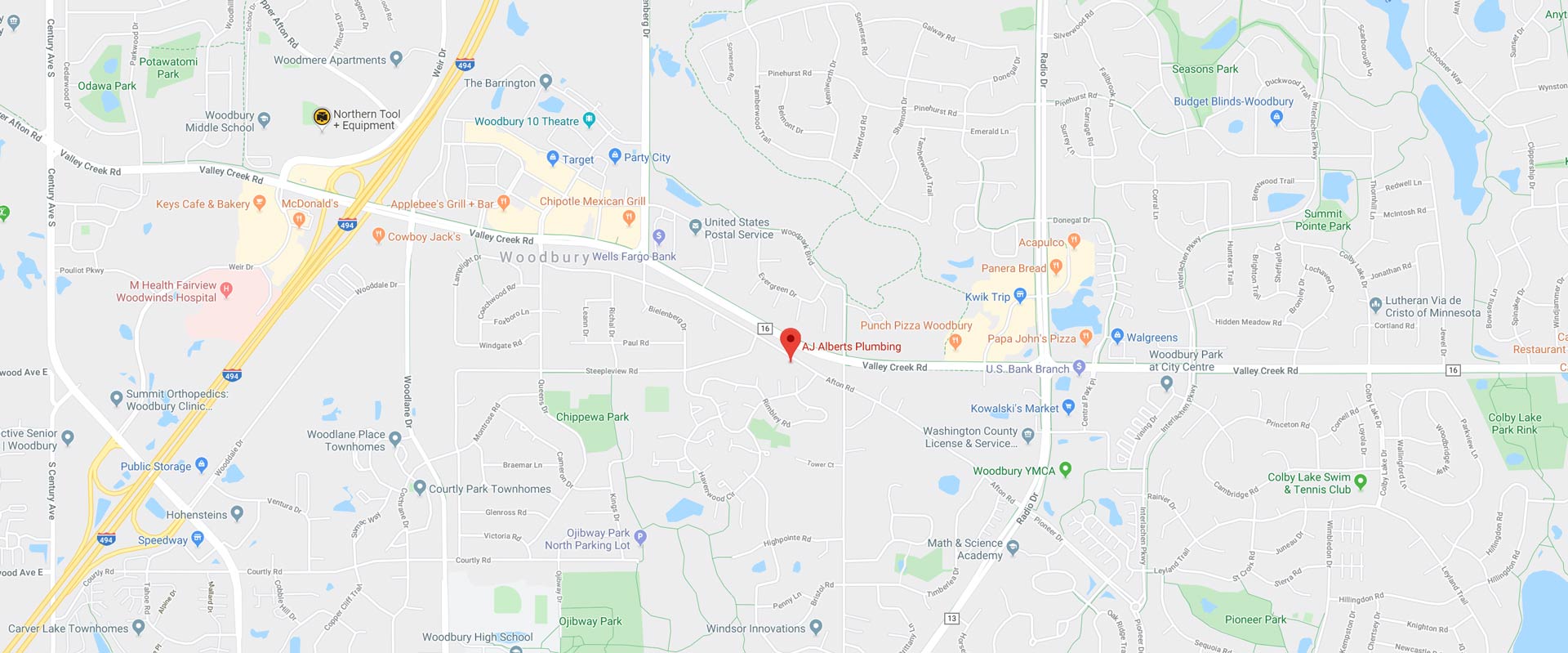Do you feel like the water pressure in your shower is much lower than than it used to be?
Odds are, it is! Overtime, sediment can built up and leave you with low water pressure and an underwhelming shower experience. The good news is, there are quite a few things you can do to increase water pressure in your shower.
We are commonly asked by homeowners how to increase water pressure in their shower. While this might feel like the end of the world to you at this exact moment, you’d be hard-pressed to find a single person who hasn’t been in the same situation at some point. That is why we’re going to cover how to increase water pressure in your shower, several DIY remedies, and when seeking professional water pressure services can help solve your shower or sink issues.

What’s Causing Your Water Pressure Problem?
There are several reasons why your shower’s water pressure might be underperforming, but you don’t have to put up with it anymore. This article explores some of the most common causes of low pressure in your shower and how you can fix the problem quickly.
Examples of some of the primary reasons homeowners experience problems with their water pressure include:
- Mineral buildup in fixtures
- Rusted and leaking pipes
- Broken or faulty pump mechanisms
- Incorrect settings on valves and fixtures
- Insufficient flow from the local water supply
- Presence of flow restrictors
- Old infrastructure or an outdating plumbing system
8 Top Tips to Increase Water Pressure
Looking to find a quick fix for your water pressure issues? Give these eight great tips a shot:
1.) Look for a Flow Restrictor
Some newer houses have flow restrictors installed in the shower that help save energy and water (and money) without affecting the water pressure itself. Unfortunately, water restrictors don’t work as well in older homes and are often the reason you lack access to a high-pressure water supply.

2.) Clean Your Shower Head
As we mentioned above, shower heads are the culprit behind your low water pressure issues in some cases. That’s because the small holes on your shower head can get blocked by mineral deposits over time, making it difficult for anything to flow out.
Sediments and other unsafe or unsightly kinds of growth that could be affecting your shower head flow include:
- Mold
- Mildew
- Rust
- Calcium
- Limescale
- Dirt
- Sand
- Silt
If you suspect that a clogged shower head is behind the insufficient water pressure in your home, there’s a simple, quick fix to correct the issue, but many homeowners don’t want to hear it because they already have enough chores on their plate. Yup, you’ll have to get your hands dirty to improve water pressure in your home, but all it takes is a little extra cleaning.
Carefully remove the shower head’s top and any other detachable mechanisms that might move around. Then, take time to ensure all visible pieces of debris are dislodged from all areas of the fixture before putting it together and back in place.
If you can’t remember which parts go where you can always glance at the shower head user manual if you have it on hand (or if you can find it in the bottom of that one junk drawer; yes, you know the one we’re talking about.).
To test water pressure after thoroughly cleaning your shower head, simply turn the water on and see if there’s a stronger flow than before.
Make sure to use some PTFE plumbers tape when screwing on the shower head back on to ensure a tight seal.
3.) Adjust Shower Head Settings
If, after taking apart and cleaning your shower head, the problem hasn’t been solved and you still have low water pressure, there’s potential for another minor underlying issue to be taking place.
Many modern shower heads feature multiple spray settings, which are easy enough to bump while washing your body. We know it sounds silly, but ensure your shower head is working correctly and set to the proper position to allow a strong and constant flow.
Sometimes you don’t need a plumber to perform miracles to increase the water pressure in your home. You just need to double-check your shower settings to see if one flip of a switch could have the water moving faster once again.

4.) Buy a New Shower Head Altogether
If you already checked the settings and cleaned your shower head and the water pressure still falls short, it might be time to replace the fixture altogether.
Whether you want a high-end model from a specialty home improvement store like Restoration Hardware or you’re happy with a bargain bin find at Menards, installing a new shower head might be the quick and cost-efficient fix you’ve been searching for all along. Remember to avoid any low-pressure shower head options so you don’t wind up right back where you started.
For tips on how to install a new shower head, check out this post.
5.) Check Your Valves
Plumbing valves might also be behind your water pressure problem, but this can be challenging to pinpoint since there are so many unique types of valves used in plumbing systems, such as:
- Gate valves
- Check valves
- Ball valves
- Faucet valve
- Butterfly valves
- Water shut-off valve
- Pressure relief valve
You want to ensure your main shut-off valve is set to the open position for the greatest amount of water flow to your faucets and fixtures.
For homeowners unfamiliar with how a water valve works (or who don’t even know where to find the main shut-off valve for their plumbing system), now might be a good time to get in touch with a local company to schedule professional plumbing services. An experienced plumbing expert can easily address any valve malfunctions or adjust settings to increase the water pressure in your shower and sinks.

6.) Look for Leaks
Leaking pipes and fixtures are often another reason you’re not getting intense water pressure. See if any leaks around your home are negatively impacting your available water supply. Check all the exposed pipes in your basement or crawlspace for apparent leaks, drips, or lingering moisture.
You definitely don’t want to allow your water pipes to keep leaking as this is wasting water and more importantly, putting your home at risk of water damage. If you suspect there is a water leak in your home, make sure to let your plumber know immediately.
7.) Install a New Shower Pump
Another reason your water supply might not be flowing at full capacity is that your old shower pump needs replacing, or you don’t even have one in place. While it can be pricey to install a shower pump, the boost to your water pressure in the shower will surely be worth the added expense.
8.) Service Your Water Heater
If it’s been a while since you’ve flushed your water heater, now is the chance to get that done. Over time, sediment can build up in the bottom of the tank, lowering the water pressure throughout your home. Although a water heater flush will take a few hours, restoring your water pressure the right way is worth it.
While it should be replaced every 8 to 10 years, we recommend servicing your water heater annually to ensure everything keeps running smoothly until it’s time for a replacement.

Get Guaranteed Solutions With Professional Plumbing Services
When it comes to showering, there’s nothing worse than weak water pressure. If you’re experiencing low water pressure in your shower, there are a few things you can do to try and fix the problem yourself. Fortunately, troubleshooting the common causes and taking some simple steps can help solve the issues quickly.
If issues persist or you’re unsure how to proceed, it’s always the best idea to contact a licensed plumber in your area. They can quickly diagnose the root cause and make the necessary repairs to your pipes or fixtures, so you have good pressure once again.
In addition, an experienced plumber can breeze through the annual maintenance checks required to prevent future problems from affecting your home’s plumbing system. From finding the leaks in your home’s pipes to professional assistance with shower plumbing, your chosen professional plumber can provide a wide range of essential home services to improve your water pressure.
The Best Way to Increase Water Pressure in Your Home
Are you still suffering through daily showers with pathetic water pressure levels? Poor water pressure can sure put a damper on your day-to-day routine. But why bite the bullet and live with the lousy flow when there are better ways to address your low water pressure problems?
Don’t hesitate to reach out to one of the premier professional plumbers at AJ Alberts for assistance fixing your shower’s water pressure. We have the tools, industry training, experience, and expertise to get your bathroom plumbing up and running at full capacity – and fast.
Although we hope this guide has helped shed more light on how you can personally resolve low water pressure, sometimes support from a plumbing specialist will do the trick. With that said, contact us today for expert plumbing help and forget your shower woes ever happened.



